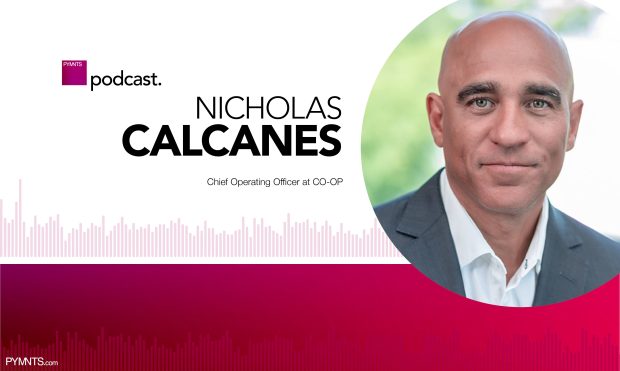Going Digital, But Staying Personal, Means Customer Considerations Must Come First

If you ask most credit unions to list their biggest competitive advantage that other financial players don’t have, you’d likely hear of their ability to meet members’ needs or to stay laser-focused on the people they serve.
Inversely, if you asked about where they felt the need to improve, you’d often hear about the need to add new technologies or other innovations to their product lines.
What’s interesting, though, is that credit unions’ pursuit of digital transformation is most likely to be successful when approached through strengths in personal service and connections.
That’s the view of CO-OP Financial Services Chief Operating Officer Nick Calcanes, who told PYMNTS in an interview that every aspect of his company’s new digital ecosystem is designed to serve credit union members, wherever and however they need.
See more: Top Selling Point for CUs Should Be Close Personal Relationships with Members
“It’s very human-centric, and it will continue to be so, because that’s how this industry started out, and it continues to be about people helping people,” Calcanes said. “We keep that at the front of our minds at all times as we’re trying to build leading technology products and services within our ecosystem.”
Calcanes should know better than most, as CO-OP’s own digital transformation journey began several years ago, long before anyone had heard of the word “COVID-19” or foresaw the need for a comprehensive transition to digital banking services.
When Calcanes first joined the company back in 2017, CO-OP was determined to evolve from being a reseller of third-party products and services to become a tech-forward leader for credit unions with its own innovative products and services. Calcanes said it was an evolution that necessitated CO-OP to transform the way it gets things done internally.
Further reading: Credit Unions Are Fine Being ‘Fast Followers’ Rather Than on Tech’s Bleeding Edge
Because credit unions themselves have a human-centric approach, Calcanes said it made sense for CO-OP to follow the same path.
“It’s critical in my experience to strongly link the people and talent who are building the technology with the individuals who are using it and delivering it every day,” he said. “We build our technology with a human-centric, user-centric and member-centric focus. [As we build it,] … we understand that our clients are going to use these technologies to deliver for their members every single day.”
For a human-centric approach to work, it’s vital to have the right talent in place. CO-OP, in the early days of its own digital transformation, put a lot of thought into its talent acquisition strategy. The company took a forward-thinking approach to where its people wanted to live and how they wanted to work, which meant allowing people to work remotely years before the pandemic forced everyone else to do the same.
“Those steps that we took four years ago positioned us well for when we had to move all of our workers home in the first couple of weeks of the pandemic,” Calcanes said.
He explained how CO-OP still adheres to the same human-centric ethos as it guides its clients – the credit unions themselves – on their own digital transformation journeys. When it comes to designing and implementing solutions that can aid this, he said the focus is always on their members and how they need to interact in their financial lives.
Read more: Credit Unions’ API Drive to Digital Innovation
“It needs to be seamless and secure, and it needs to deliver on not only what happens every day so members can complete their transactions, but also ensure it happens in a way that’s user-friendly and frictionless.”
To that end, CO-OP encourages credit unions to adopt the mindset that payments are at the center of their members’ lifestyles, and the way for credit unions to grow is to enable digital, secure transactions every day. The people-focused approach, combined with a strong emphasis on the ethical application of its technology, is key to building that confidence among members.
And with that high degree of trust, CO-OP is able to gather massive amounts of transaction data that can be used to serve credit unions and their members.
You might also like: 57% of CFOs Say Technology Investments Are About Transformation, Not Automation
“Other than our people, our data is our biggest asset. We’re able to use that data and things like AI to protect members from a fraud perspective,” Calcanes said. “When something happens, [if a disputed transaction arises,] we’re able to use those tools and that data through our CO-OP Resolution Center to assist members through a tough situation in a virtual or digital way. So there’s no need for them to go to a branch or call anybody. Things like that are a critical aspect of an individual’s financial life.”
Just as critical, from the credit union’s perspective, is to know exactly what it intends to achieve as it embarks on its efforts to digitize.
“Obviously we had our financial outcomes, but we also had client experience outcomes, expense management outcomes and internal associate satisfaction outcomes,” he noted.
Once those goals have been defined, the next step is to create a strategy that takes you toward them, and then execute relentlessly against that strategy with those outcomes serving as a guide, Calcanes advised.
More like this: Credit Unions Need Digital Innovation to Attract and Retain ‘The Next Generation’
Lastly, Calcanes stressed the importance of educating people about the changes they need to implement. He said that in his experience, while people aren’t necessarily against change, most find that it’s hard and uncomfortable. Therefore, the people CO-OP is asking to implement the changes are a high priority, he said. It’s vital to educate them about the why and the where of implementing new technology.
“If they understand the why, I think people can be really good at delivering, because they’re member-focused and they do care about their credit unions,” Calcanes said. “So we’re just as focused on the people executing the strategy. Human-centricity is critical, and that’s why we’re interacting relentlessly with credit unions and their members – to understand what they need to be successful in their financial lives.”
